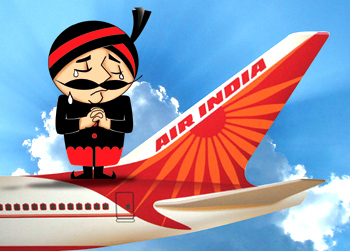INDIAN ARMED FORCES CHIEFS ON OUR RELENTLESS AND FOCUSED PUBLISHING EFFORTS

The insightful articles, inspiring narrations and analytical perspectives presented by the Editorial Team, establish an alluring connect with the reader. My compliments and best wishes to SP Guide Publications.

"Over the past 60 years, the growth of SP Guide Publications has mirrored the rising stature of Indian Navy. Its well-researched and informative magazines on Defence and Aerospace sector have served to shape an educated opinion of our military personnel, policy makers and the public alike. I wish SP's Publication team continued success, fair winds and following seas in all future endeavour!"

Since, its inception in 1964, SP Guide Publications has consistently demonstrated commitment to high-quality journalism in the aerospace and defence sectors, earning a well-deserved reputation as Asia's largest media house in this domain. I wish SP Guide Publications continued success in its pursuit of excellence.
Once Upon a time

Air India’s fast souring fairy tale has a shocked nation glued to the unceasing flurry of damning revelations that threaten to rip apart the airline’s reputation
Yesteryear’s epitome of the nation’s pride today lies in tatters. Air India’s Maharaja suffers a plight uncannily similar to the erstwhile heads of princely states deprived of their privy purses. The situation is so desperate that apart from the inability to clear dues running into thousands of crores for services obtained, the airline is not in a position to arrange for Rs 350 crore to disburse salaries to its over 30,000 work force. The management has been pleading before the government for a Rs 15,000-crore ($3 billion) bailout package just to survive. The package requested consists of equity infusion of Rs 5,000 crore and the balance as long term loan at subsidised interest rates. The government is unlikely to oblige and the most optimistic figure could be limited to around a-third of the total package requested by Air India—that, too, tagged with stringent conditions.
Courting crisis with decades of neglect and apathy, the public sector undertaking has perennially been afflicted with the ills characteristic of government enterprises. In stark contrast to a profitable commercial enterprise, Air India functions as a department of the central government, adhering to a flawed business model and shoddy management policies of bureaucrats sorely lacking professional insight and experience. Overstaffed, the organisation suffers from low productivity levels, indifferent work culture, lack of accountability, rampant indiscipline and crippling corruption levels. The aircraft are poorly maintained and the cabin staff is not known for in-flight courtesies or service. ‘On-time performance’ is almost entirely missing from the Air India lexicon. Not surprisingly then, on the international scene, the airline ranks miserably low.
Strongly influenced by leftist philosophy and corrupted by vote bank politics, the labour environment has often held the management to ransom. Employees bask in the cozy comfort of government protection with assured hefty salaries and lavish perks minus any performance-based criterion, thereby cushioned against the pressures that hone their counterparts in private airlines. Sandwiched between the powerful labour unions on the one hand and politico-bureaucratic interference on the other, the management has adopted a laissez faire approach. Prickly decisions like trimming manpower and cost, or wielding the rod to boost efficiency, have been conveniently bypassed. Those in the higher echelons of management, who toe the line, prosper; the ones who do not, are sidelined or under constant threat of unceremonious removal. The airline has been a victim of exploitation by anyone and everyone with the remotest link to the corridors of power or is in a position to exercise influence on the management who are often only too willing to oblige.
Recognising the need for consolidation, the government took the rather bold step to merge Air India and Indian under the banner of the former. Two years on, the merger remains mired in conflict and litigation. Bereft of any coherent long term plan or focus, for decades the airline has been governed by the Centre through ad hoc decisions and allowed to drift aimlessly, sinking deeper into financial morass.
Reeling under the devastating impact of global economic downturn, private airlines in India have been making vigorous effort to remain viable and rein in mounting losses through restructuring and retrenchment. But inexplicably, Air India continues to expand capacity, seemingly immune to its severe loss of credibility. So grave is the situation that the airline has been unable to obtain funds from private financial institutions. The government has agreed to come to its rescue, but in return has called for a restructuring plan within 30 days. Seemingly irretrievable, the current situation cannot be tackled with cosmetic changes. Bailout by the government would only push the employees back into the comfort zone.





